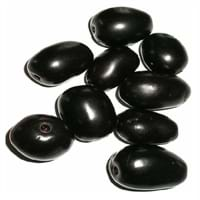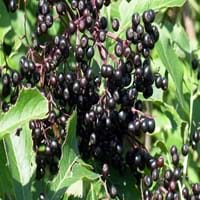Health Benefits
Cancer prevention, Heart care, Increase in haemoglobin, Regulates Blood Sugar, Ulcer prevention
Cancer prevention, Heart care
General Benefits
Boosts immune system, Digestive aid, Fights against infections, Strengthens bones
Anti oxidant properties, Anti-inflammatory properties, Boosts immune system, Controls blood sugar levels, Cures fever, Digestive aid, Eye care, Fights against infections, Flu treatment, Helps in weight loss, Maintains healthy cholesterol level
Skin Benefits
Brightens and lightens complexion, Skin cleansing, Skin rejuvenation, Treatment of acne, Treatment of dark spots
Anti-aging benefits, Skin rejuvenation
Hair Benefits
Promotes longer and healthier hair, Protects hair
Promotes longer and healthier hair
Allergy Symptoms
Abdominal pains, NA
Abdominal pains, Asthma, NA, Sneezing, Sore throat
Side Effects
Decrease in blood sugar levels, Allergic reaction, Throat irritation, Throat swelling, Possibly unsafe during pregnancy
Diarrhoea, Nausea, Vomiting
Lactating Women
Yes
Not Available
Best Time to Eat
As a snack in the late afternoon, Don't consume at night and before bed, Eat the fresh ones, avoid mixing with any other foods, don't eat after meal., Morning time (before lunch), Strictly avoid empty stomach
As a snack in the late afternoon, Don't consume at night and before bed, Eat the fresh ones, avoid mixing with any other foods, don't eat after meal., Morning time (before lunch)
Vitamin B5 (Pantothenic Acid)
Not Available
Vitamin B9 (Folic acid)
Not Available
Vitamin C (Ascorbic Acid)
Phytosterol
Not Available
Calories in Fresh Fruit with Peel
Calories in Fresh Fruit without Peel
Not Available
Not Available
Calories in Frozen Form
Not Available
Not Available
Calories in Dried Form
Not Available
Calories in Canned Form
Not Available
Not Available
Type
Tree fruit, Tropical
Berry
Season
Monsoon, Summer
Autumn
Varieties
Ram Jarnun and Paras
Adams, Black Beauty, Black Lace, Johns, Nova, Variegated and York
Color
Black, Magenta, Purple
Black, Red
Inside Color
Purple
Magenta
Taste
Astringent, Sweet
Juicy, Sweet
Origin
Bangladesh, India, Indonesia, Malaysia, Nepal, Pakistan, Philippines, Sri Lanka
Europe
Soil Type
Loam, Sandy loam, Well-drained
Sandy, Well-drained
Climatic Conditions
Humid, Rainfall
Warm to hot climate
Facts about
- Wood of jambul tree is water-resistant wood & is used in railroads and to implement engines in the well.
- In Indian mythology, it is said that Jambul fruit was revered by Buddha.
- Jambul has a huge importance in Ayurveda.
- According to a superstitious belief, the "elder tree" was supposed to ward off evil influence & give protection from witches.
- Branches from its tree are also used to make fujara, koncovka & other Slovakian flutes.
Top Producer
India
United States of America
Other Countries
Bangladesh, Indonesia, Malaysia, Nepal, Pakistan, Philippines, Sri Lanka
Colombia, India, Mexico
Top Importer
Not Available
Not Available
Top Exporter
India
Not Available
Botanical Name
Syzygium cumini
Sambucus nigra
Synonym
Eugenia cumini
Not Available
Subkingdom
Tracheobionta
Tracheobionta
Division
Magnoliophyta
Magnoliophyta
Class
Magnoliopsida
Magnoliopsida
Subclass
Rosidae
Asteridae
Order
Myrtales
Dipsacales
Family
Myrtaceae
Adoxaceae
Species
S. cumini
S. nigra
Generic Group
Not Available
Moschatel
Difference Between Jambul and Elderberry
We might think that Jambul and Elderberry are similar with respect to nutritional value and health benefits. But the nutrient content of both fruits is different. Jambul and Elderberry Facts such as their taste, shape, color, and size are also distinct. The difference between Jambul and Elderberry is explained here.
The amount of calories in 100 gm of fresh Jambul and Elderberry with peel is 60.00 kcal and 73.00 kcal and the amount of calories without peel is Not Available and Not Available respectively. Thus, Jambul and Elderberry belong to and category.These fruits might or might not differ with respect to their scientific classification. The order of Jambul and Elderberry is Myrtales and Dipsacales respectively. Jambul belongs to Myrtaceae family and Elderberry belongs to Adoxaceae family. Jambul belongs to Syzygium genus of S. cumini species and Elderberry belongs to Sambucus genus of S. nigra species. Beings plants, both fruits belong to Plantae Kingdom.









